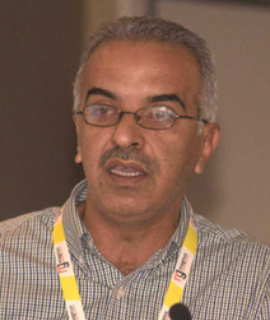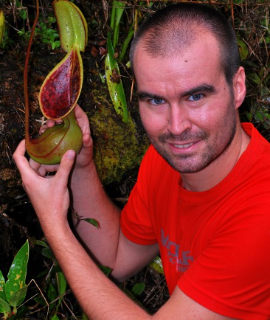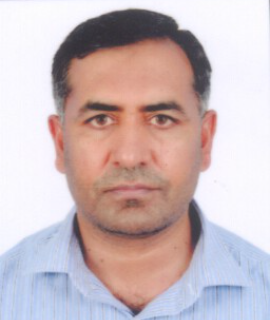Frendo Pierre, University of Nice Sophia Antipolis, France
The world population growth associated with the shortage of fossil resources and global climate change create a strong socioeconomic demand for the development of plant production systems requiring less natural resources and more respectful of the environment. Legume plants provi [....] » Read More










































































































Title : How to structure the debate on modern breeding in agriculture?
Klaus Ammann, University of Bern, Switzerland
We need to introduce a new way of Discourse of difficult topics which are debated since many years in Science, Governments, Institutions and the Public without real progress made and consensus solutions still far away. This means that we have to follow innovative Discourse method [....] » Read More
Title : Why is the mid-southern United States an epicenter for the development of herbicide resistant weeds?
Thomas C Mueller, University of Tennessee, United States
The intensity of agriculture varies across the globe. This report discusses one aspect of plant biology as it relates to the control of unwanted vegetation in a highly managed, intensively farmed area within the United States. While the biological principles apply in all environm [....] » Read More
Title : Breeding for climate change: Dissecting key adaptation traits in Medicago sativa through QTL mapping
Ali M Missaoui, The University of Georgia, United States
With the erratic changes in weather patterns, development of adapted cultivars is becoming a challenge to breeders because of the pseudo-GXE. This implies a clear understanding of key adaptation traits in order to package as many as possible in a cultivar for broad adaptation. Th [....] » Read More
Title : Effects of Dicamba Micro-Rates on sensitive crops
Stevan Knezevic, University of Nebraska-Lincoln, United States
I n order to control glyphosate resistant weeds, Dicamba-Tolerant (DT) Soybeans were plated at about 20 million US acres in 2017. It is believed that the number of acres will increase in 2018 season, which created a concern that the widespread use of dicamba-based herbicides in D [....] » Read More
Title : Genetic breeding as a tool to control the pine wilt disease
Raquel Diaz Vazquez, Lourizan Forest Research Center, Spain
Pine wilt disease (PWD) is caused by the pine wood nematode (PWN), Bursaphelenchusxylophilus, which is transmitted by a vector of the Monochamus genus. This nematode is an invasive pest that nowadays constitutes the greatest menace to conifer forests, mainly pine forests, worldwi [....] » Read More
Title : High diluted solution of Thuya occidentalis changes photosynthetic response curves in tomato plants infected with Meloidogyne incognita
Jose Renato Stangarlin, Western Parana State University, Brazil
The use of high dilutions on plants may cause changes in plant metabolism and result in disease control by inducing resistance. This work aimed to study the physiological responses of tomato plants (Solanum lycopersicum L.) infected with the root-knot nematode Meloidogyne incogni [....] » Read More
Title : Transfer of chromatin of wild goatgrasses (Aegilopssp.) carrying leaf rust resistance genes into triticale (Triticosecale Wittmack) using chromosome engineering
Michal Tomasz Kwiatek, Institute of Plant Genetics of the Polish Academy of Sciences, Poland
I n cereal breeding, precise chromosome engineering using homologous recombination is a method harnessed for controlled introduction of chromatin fragments with desirable genes or loci into nuclear genome of crop plants. Alternatively, this practice can be employed for induction [....] » Read More
Title : ATTRACAP: An innovative attract-and-kill strategy for the control of wireworms
Beitzen Heineke Wilhelm, BIOCARE GmbH, Germany
Wireworms, the polyphagous soil-dwelling larvae of click beetles (Coleoptera: Elateridae), are a major insect pest of worldwide relevance causing tremendous yield losses in several crop production systems, like potatoes. The entomopathogenic fungus Metarhizium brunneum is already [....] » Read More
Title : Seagrass (Zostera marina) population genetics in a spatially structured natural system
Nahaa M Alotaibi, Swansea University, United Kingdom
S eagrass is a group of flowering plants that live in shallow sheltered areas along the UK coastline where they form dense green meadows under the sea. It is one of the most important sources of coastal primary production and it provides a critical habitat for juvenile reef fish [....] » Read More
Title : Breeding of rice in the agricultural research center Donskoy
Kostylev Pavel, Agricultural Research Center “Donskoy”, Russian Federation
I n the process of selection work in the rice laboratory a number of intensive varieties were created with different vegetation period and grain form. In the Register of breeding of the Russian Federation achievements made rice varieties: early maturing Contact (1994), mid-ripeni [....] » Read More
Title : Nucleolar iron impacts rDNA organization and expression in A. thaliana
Montacie Charlotte, UMR 5096 - CNRS/UPVD, France
The biogenesis and structure of the nucleolus are directly linked to ribosomesynthesis. Remarkably, plant nucleoli contain a major pool iron. Interestingly, accumulation of iron in animal cells induces rDNAhypermethylation and oxidation of pre-rRNA, and is linked to neurodegenera [....] » Read More
Title : Breeding for the ensure the good quality of the Hungarian Persian walnut industry
Geza Bujdoso, National Agricultural Research and Innovation Centre – Fruitculture Research Institute, Hungary
The Persian walnut (Juglans regia L.) is the most important shell fruit species in Hungary. Growing of this species became very popular in the past 10-15 years. Pomological evaluation of a double selected walnut population was done to select new promising genotypes at the Nationa [....] » Read More
Title : Ex situ conservation and in vitro multiplication of potential cactus species resistant to cochineal and productive of fruits consumable in Morocco
Youssef EL Kharrassi, African Sustainable Agriculture Research Institute (ASARI), University Mohammed VI Polytechnic (UM6P), Laayoune, Morocco
Cactus pear genus Opuntia spp is a very important fruit crop in Moroccan agriculture, and especially resistant to droughts. This succulent plant contributes to guarantee the sustainability and remediation of an ecosystem with much degraded vegetation. It is very rich in biomolecu [....] » Read More
Title : The effect of BC204, a plant bio-stimulant, on the growth of A. thaliana and S. lycopersicon
Johannes Loubser, Stellenbosch University, South Africa
BC204, an agricultural product of a local company in South Africa, is a biostimulant consisting of a citrus extract and certain organic acids. The plant growth-promoting effect of BC204 has been demonstrated previously and is currently used in agriculture to promote plant growth [....] » Read More
Title : Regulatory divergence in wound-responsive gene expression in domesticated and wild tomato
Ming Jung Liu, Academia Sinica, Taiwan
The evolution of transcriptional regulatory mechanism is central to how stress response and tolerance differ between species. However, it remains largely unknown how divergence in cis-regulatory sites and, subsequently, transcription factor (TF) binding specificity contribute to [....] » Read More
Title : Biosafety on reliable bacteria application
Juan lgnacio Vilchez Morillas, Shanghai Center for Plant Stress Biology, Chinese Academy of Sciences, China
The use of microorganism-based products in agriculture has been raising for the las two decades. Bioinoculant products has been calculated to produce around 2 billion USD in 2017, and economic analysts estimate they will produce 2-3.29 billion USD profit by 2022. This growing tre [....] » Read More
Title : Exploring key cellular processes and candidate genes regulating the primary thickening growth of Moso underground shoots
Qiang Wei, Nanjing Forestry University, China
The primary thickening growth of Moso (Phyllostachys edulis) underground shoots largely determines the culm circumference. However, its developmental mechanisms remain largely unknown. Using an integrated anatomy, mathematics and genomics approach, we systematically studied cellu [....] » Read More
Title : A genomic analysis of interactions between a vector-borne phyotpathogen and cotton
Enrique G M, USDA - ARS, United States
Cotton (Gossypium hirsutum L.) is grown globally and of significant economic value. Polyploids of several G. hirsutum have been sequenced. Bacteria transmitted by piercing-sucking pests of cotton bolls can cause major yield losses due to resulting seed and lint necrosis. We recov [....] » Read More
Title : Genomic analysis of lipid-related genes showed insight to the high oil content in sesame
Linhai Wang, Chinese Academy of Agricultural Sciences-Oil Crops Research Institute (CAASOCRI), China
S esame is considered the queen of oilseeds for its high oil content and quality, and is grown widely in tropical and subtropical areas as an important source of oil and protein. The completion of sesame genome assembly provides novel insight into its genomic structure and gene c [....] » Read More